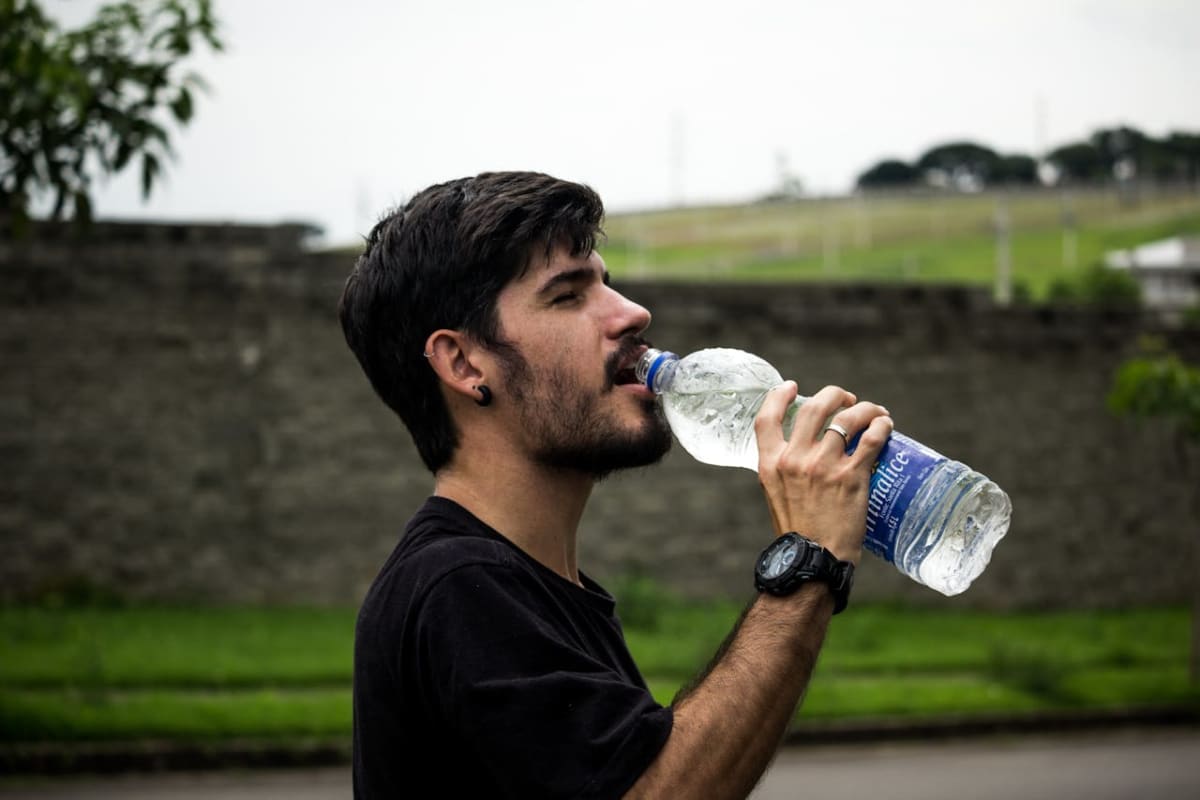Recognizing the signs of fever in toddlers is essential for parents, especially given the frequent occurrence of fever in young children.
This article aims to provide a comprehensive guide to help parents identify fevers and understand their importance, thereby ensuring they take the appropriate steps to keep their toddler healthy.

Understanding Normal Body Temperature in Toddler
The following table provides the average body temperatures for various age groups according to a review of studies.
| Age | Oral | Rectal/Ear | Armpit |
|---|---|---|---|
| 0-12 months | 36.7–37.3°C(95.8–99.3°F) | 37–37.9°C(96.8–100.3°F) | 36.4–37.3°C(94.8–98.3°F) |
| Children | 36.4–37.4°C(97.6–99.3°F) | 37–37.9°C(98.6–100.3°F) | 35.9–36.83°C(96.6–98.3°F) |
| Adults | 35.6–36.7°C(96–98°F) | 36.1–37.2°C(97–99°F) | 35–36.1°C(95–97°F) |
| Adults over age 65 | 33.9–37°C(93–98.6°F) | 34.4–37.6°C(94–99.6°F) | 33.3–36.4°C(92–97.6°F) |
Being able to identify your body's normal range will make it easier to know when you have a fever.
While the normal range of body temperature is around 37°C, it will vary based on age.
Do keep in mind that the average body temperature varies from person to person.
What Is a Fever?
In general, a fever means the body temperature is above the normal range.
For a toddler, he or she might have a fever if they have:
- Has a rectal temperature of 38°C or higher.
- Has an oral temperature of 37.8°C or higher.
- Has an armpit temperature of 37.2°C or higher.
Why Recognizing Fever Early Matters
Early detection of fever in toddlers is important for monitoring and managing their health. A fever in young children is often a sign of an underlying infection or illness and can help alert parents to potential health issues.
In some cases, fever can lead to complications, making it essential for parents to observe their child's symptoms and seek medical advice when necessary.
How to Check Body Temperature Using a Thermometer?
Using a thermometer correctly is crucial in accurately assessing your child's temperature.

Different types of thermometers are suitable for toddlers:
-
Digital thermometers: These can be used for oral, rectal, or axillary (armpit) temperature readings. Rectal readings are considered most accurate for children under 3 years old, and axillary readings are appropriate for older children.
-
Temporal artery (forehead) thermometers: These infrared thermometers offer a non-invasive method for measuring temperature by scanning the temporal artery on the forehead.
-
Ear (tympanic) thermometers: These are designed for use in the ear canal and can be accurate when used correctly but may not be suitable for infants under 6 months.
Forehead thermometers may be less accurate than other thermometers, such as oral or ear thermometers. Wearing headwear beforehand or having sweat on the forehead could affect the reading.
In general, make sure you clean the thermometer before and after each use, and ensure the child is at rest for at least 5 minutes before checking their temperature.
What Factors Can Affect Your Toddler's Temperature?
Understanding the nuances of factors influencing your toddler's temperature is crucial for accurate health assessments.
Various internal and external factors could affect your toddler's body temperature, and recognizing these influences enhances your ability to monitor your child's well-being effectively.
Here are some factors that could affect body temperature:
- Environmental conditions: The temperature and humidity levels in your toddler's surroundings can impact their body temperature. It's essential to dress your child appropriately for the weather, ensuring comfort without risking overheating.
- Physical activity levels: Physical exertion during play can temporarily elevate body temperature, emphasizing the importance of monitoring your child and ensuring adequate hydration.
- The time of day: Our body tends to warm up throughout the day which naturally affect temperature readings, prompting the need to establish baseline measurements at different times.
- Metabolism: A key internal factor, your child may undergo changes during growth spurts and variations in energy levels, influencing your toddler's baseline temperature
What Causes Fever?
Most fevers in kids are usually caused by a viral infection that resolves on their own. A fever helps the body by stimulating the immune system to fight the infection.
Bacterial infections, on the other hand, may get worse if not treated with antibiotics.
Here are common causes of fever:
- A viral infection
- A bacterial infection
- Heat exhaustion
- Certain inflammatory conditions such as rheumatoid arthritis — inflammation of the lining of your joints (synovium)
- A cancerous (malignant) tumor
- Some medications, such as antibiotics and drugs used to treat high blood pressure or seizures
- Some immunizations, such as diphtheria, tetanus and acellular pertussis (DTaP), pneumococcal, or COVID vaccine might cause children to develop a fever.
Immunisations are designed to stimulate the immune system to develop immunity to a specific bacteria/virus. Fevers following immunisation are not usually prolonged.
Immunisation against diphtheria is compulsory by law. This vaccination is also required for enrolment into schools.
As part of the Singapore National Adult Immunisation Schedule (NAIS), the Tdap vaccine is recommended for adults with certain medical conditions, with no history of previous vaccination or if their last vaccination was at least 10 years ago. Consult your doctor for more details.
Common Signs of Fever in Toddlers
There are several common signs that your toddler may have a fever, which include:
- Increased body temperature: Body temperatures above the normal range generally indicate a fever.
- Physical symptoms: A child with a fever may have flushed cheeks, warm and sweaty skin, a warm forehead, or cold hands and feet.
- Changes in behavior: Toddlers experiencing fever may be more irritable, lethargic, or less interested in play.
- Other accompanying symptoms: In some cases, fever may coincide with other symptoms, such as vomiting, cough, rash, or sore throat.
How to Manage Toddler Fever at Home?
In most cases, a fever on its own is harmless and should subside in 3 – 5 days.
In addition to seeking medical guidance, parents can employ a couple of home care strategies to help manage their toddler's fever:
-
Keep your child hydrated: Encourage them to drink fluids such as water, electrolyte drinks, or diluted fruit juices.
-
Offer appropriate nutrition: A balanced diet rich in vitamins and nutrients can help support your child's immune system.
-
Maintain a comfortable environment: Keep the room temperature stable and dress your child in light, breathable clothing to prevent overheating.
-
Administer fever-reducing medication: Seek medical advice and administer the prescribed dosage of fever medication like paracetamol or ibuprofen liquid if his fever remains above 38.5°C.
-
Monitor symptoms and temperature: Track your child's temperature and symptoms every 4 hours throughout the day and contact your healthcare provider if the situation worsens.
Why Is My Child's Fever Higher at Night?
Children are more prone to getting fevers as their immune systems aren't fully developed. But do not be alarmed if your child's fever is higher at night. Body temperatures rise naturally in the evening, so a slight fever in the day can easily spike during sleep.
When Should You Bring Your Child to the Doctor?
Fever can be scary for parents, particularly if their child is very young or has had a fever that persists for 3 days straight.
With babies and younger children, it can be even harder to know when to speak with a doctor. Call your paediatrician if:
- your baby is less than 3 months old and has a fever.
- your baby is between 3 months and 3 years old and has a temperature of 38.9°C (102°F).
- your child is 3 years or older and has a temperature of 39.4°C (103°F).
A higher temperature does not necessarily mean a more severe illness. A fever is the body's response to an infection and may be evidence that you are getting better, not worse.
Seeking medical attention is important if your baby or child has a fever and exhibits any of the following symptoms:
- Fever persists or worsens over 72 hours.
- Fever is accompanied by severe symptoms (e.g., seizure, difficulty breathing, or rashes).
- The toddler appears lethargic, refuses to eat, or shows signs of dehydration (e.g., dry mouth, sunken eyes, or reduced urination).
- The fever is coupled with a stiff neck or severe headache, indicative of a potentially severe infection.
Generally, it is best to consult a paediatrician for guidance on managing a toddler's fever, as they can provide a tailored approach based on specific symptoms and medical history.
Conclusion
All kids get fevers, and in most cases, they're back to normal within a few days. For older babies and kids, the way they act can be more important than the reading on your thermometer.
Everyone gets a little cranky when they have a fever. This is normal and should be expected.
By combining early detection, understanding when to seek medical attention, and proper home care, parents can help ensure their child's health and well-being when they have a fever.



